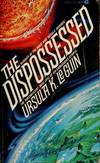![Xie sheng pu 諧聲譜 [Assonance Charts]](https://d3525k1ryd2155.cloudfront.net/h/653/137/1569137653.0.m.jpg)
Xie sheng pu 諧聲譜 [Assonance Charts]
by DING, Xian 丁顯
- Used
- Condition
- See description
- Seller
-
New York, New York, United States
Payment Methods Accepted
About This Item
140; 102 folding leaves. Two vols. 8vo, orig. wrappers, new stitching. [China]: Preface dated 1904.
"Phonology is the part of philology that belongs to what is innate; the six ways of writing characters is the part that belongs to what is acquired." Thus begins one of the Prefaces to Ding Xian's book, a learned phonological treatise that organizes Chinese characters according to their pronunciation. Very little is known about Ding, except that he was from Huaian in Jiangsu province and was born c. 1829 (aged 82 sui in 1900, by his own account).
In the Chinese lexicographical tradition, characters were commonly arranged according to either their graphical structure or their rhyme. In the late imperial period, the arrangement by graphical structure became more refined and predictable, and the arrangement by rhyme took into consideration additional phonological properties. Ding's book represents these developments, arranging characters primarily by their beginning sounds (initials) and secondly by their ending sounds (rhyme).
The book contains Prefaces by Li Weihan 李維翰 (1874-1923) and Sun Chengjia 孫承嘉, both dated 1904, as well as one by the author, dated 1900. The author's Preface is followed by "Discourse on the Vocabulary with Assonance Characters Divided by Initial" (xiesheng fenmu zihui 諧聲分母字彚), which explains the charts that follow. It appears that words exhibiting what Ding calls "assonance" share the same place of articulation. However, only a detailed study of the work would clarify exactly what Ding means by "assonance," a word he clearly considered key to the structure of his work. In his Preface, he states his admiration for Li Ruzhen's 李汝珍 (d. 1830) Lishi yinjian 李氏音鑒 [Mr. Li's Sound Mirror], which Ding thinks "should rather have been called Assonance Mirror" 此書當名曰聲鑑. The exact import of these words awaits further study; so far Ding's book appears to have received very little scholarly attention.
The main body of the work consists of characters grouped first by their initial, then by rhyme. The charts are followed by phonological texts. These include famous 18th-century scholar Qian Daxin's 錢大昕 (1728-1804) landmark essay "In Antiquity There Were No Labiodental Sounds" 古無輕脣音 and other texts by Ding.
Fine set, preserved in a hantao.
References
Xu Jialu 许嘉璐, ed. Chuantong yuyanxue cidian 传统语言学辞典. Shijiazhuang: Hebei jiaoyu chubanshe, 1990.
"Phonology is the part of philology that belongs to what is innate; the six ways of writing characters is the part that belongs to what is acquired." Thus begins one of the Prefaces to Ding Xian's book, a learned phonological treatise that organizes Chinese characters according to their pronunciation. Very little is known about Ding, except that he was from Huaian in Jiangsu province and was born c. 1829 (aged 82 sui in 1900, by his own account).
In the Chinese lexicographical tradition, characters were commonly arranged according to either their graphical structure or their rhyme. In the late imperial period, the arrangement by graphical structure became more refined and predictable, and the arrangement by rhyme took into consideration additional phonological properties. Ding's book represents these developments, arranging characters primarily by their beginning sounds (initials) and secondly by their ending sounds (rhyme).
The book contains Prefaces by Li Weihan 李維翰 (1874-1923) and Sun Chengjia 孫承嘉, both dated 1904, as well as one by the author, dated 1900. The author's Preface is followed by "Discourse on the Vocabulary with Assonance Characters Divided by Initial" (xiesheng fenmu zihui 諧聲分母字彚), which explains the charts that follow. It appears that words exhibiting what Ding calls "assonance" share the same place of articulation. However, only a detailed study of the work would clarify exactly what Ding means by "assonance," a word he clearly considered key to the structure of his work. In his Preface, he states his admiration for Li Ruzhen's 李汝珍 (d. 1830) Lishi yinjian 李氏音鑒 [Mr. Li's Sound Mirror], which Ding thinks "should rather have been called Assonance Mirror" 此書當名曰聲鑑. The exact import of these words awaits further study; so far Ding's book appears to have received very little scholarly attention.
The main body of the work consists of characters grouped first by their initial, then by rhyme. The charts are followed by phonological texts. These include famous 18th-century scholar Qian Daxin's 錢大昕 (1728-1804) landmark essay "In Antiquity There Were No Labiodental Sounds" 古無輕脣音 and other texts by Ding.
Fine set, preserved in a hantao.
References
Xu Jialu 许嘉璐, ed. Chuantong yuyanxue cidian 传统语言学辞典. Shijiazhuang: Hebei jiaoyu chubanshe, 1990.
Reviews
(Log in or Create an Account first!)
Details
- Bookseller
- Jonathan A. Hill, Bookseller, Inc.
(US)
- Bookseller's Inventory #
- 9634
- Title
- Xie sheng pu 諧聲譜 [Assonance Charts]
- Author
- DING, Xian 丁顯
- Book Condition
- Used
- Quantity Available
- 1
Terms of Sale
Jonathan A. Hill, Bookseller, Inc.
5 day return guarantee, with full refund including shipping costs for up to 5 days after delivery if an item arrives misdescribed or damaged.
About the Seller
Jonathan A. Hill, Bookseller, Inc.
Biblio member since 2009
New York, New York
About Jonathan A. Hill, Bookseller, Inc.
By appointment
Glossary
Some terminology that may be used in this description includes:
- Wrappers
- The paper covering on the outside of a paperback. Also see the entry for pictorial wraps, color illustrated coverings for...
- Leaves
- Very generally, "leaves" refers to the pages of a book, as in the common phrase, "loose-leaf pages." A leaf is a single sheet...
- Fine
- A book in fine condition exhibits no flaws. A fine condition book closely approaches As New condition, but may lack the...
- New
- A new book is a book previously not circulated to a buyer. Although a new book is typically free of any faults or defects, "new"...

